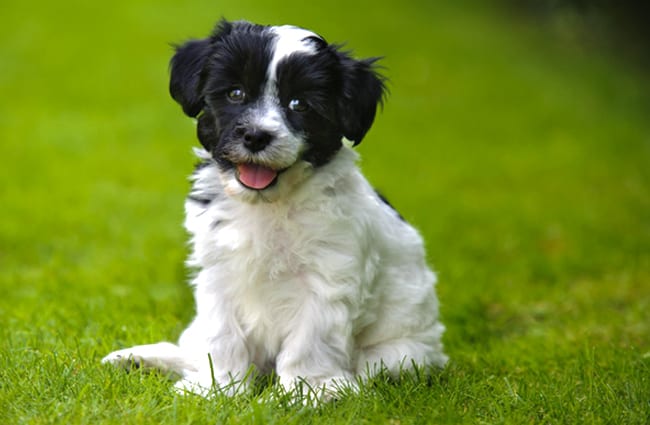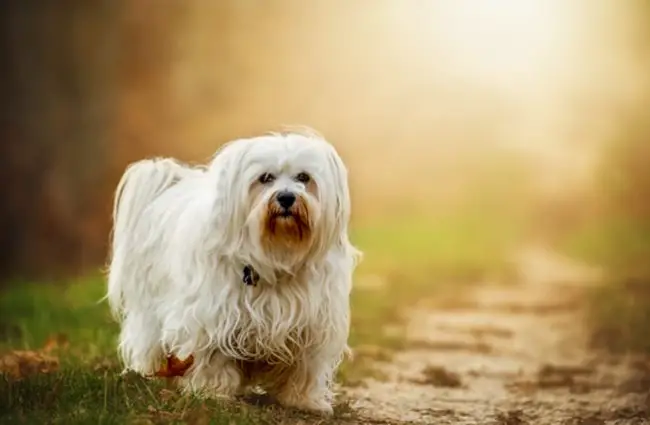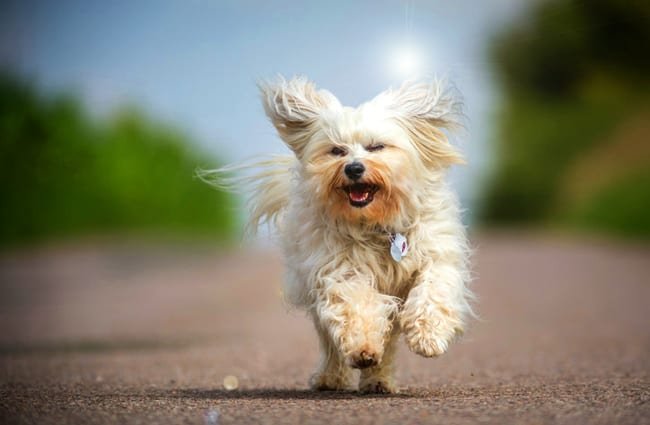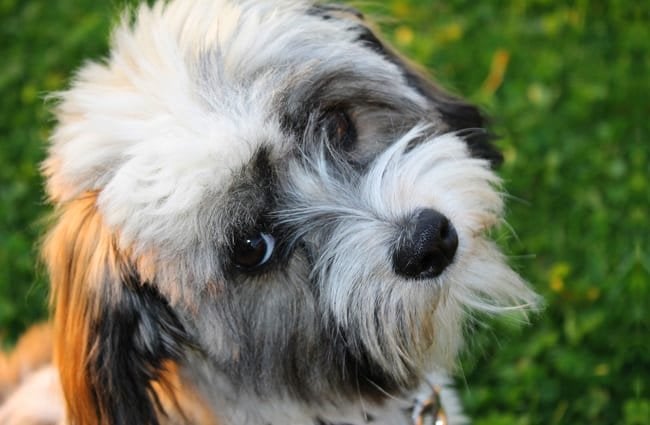The Havanes is a truly dashing little dog. Fun and loving, these are lapdogs with a personality. Plus, they’re not as fragile as many toy breeds. With limited exercise needs and the option of a low-maintenance puppy cut, this breed can easily fit in to many different families. Read on to learn more about the Havanese.
Description of the Havanese
These dogs are covered in pure silk. All that hair hides surprisingly stout bodies. Despite their size and temperament, the Havanese is not as fragile as you’d imagine.
The Havanese is Cuba’s only claim to doggie fame. However, these little cuties have a close relationship to many Bichon breeds. Small, fluffy dogs from Europe were commonly traded internationally at seaports. That’s likely how they ended up in the Caribbean!
The Havanese is known for a silky coat. Unlike many of their other cousins, they can come in a variety of colors. Options include white, silver, and fawn.
Life Expectancy and Size
This breed has a healthy lifespan, often living between 14 and 16 years.
The Havanese stands just 8.5 to 11.5 inches tall, and can weigh between 7 and 13 pounds. They’re sturdy little things!
Protective Ability
This breed is friendly, funny, and small. These aren’t exactly the best adjectives for a guard dog. However, the Havanese has been known to bark at birds and butterflies that enter his domain. He may alert you new activity on the premises, but it likely won’t be the kind you’re worried about. Some go a bit too far, and their constant barking can be a pain.
Training
The Havanese is a happy little dog who easily puts his can-do attitude toward training sessions. These dogs are very capable learners and they are not too difficult to train.
These dogs are sensitive to harsh words. They easily become sad, which is no fun for anyone. A sad pup will not be able to perform up to his full potential. Get creative with rewards, so that these dogs have consistent positive reinforcement.
Remember that these are small dogs! Manhandling is simply not an option.
Energy Level
These are alert little lapdogs. Although they do not need a great deal of exercise, they are always up for a game. They are mostly concerned with socializing, though.
The Havanese loves to be with his people. Otherwise, they quickly become sad and even destructive. These social animals feed off of the people around them. This means they are happy to go from cuddling one minute to games the next.
What Living with a Havanese is Like
Fun loving and yet easy to exercise, these dogs can fit in to many different environments. Like their name implies, they are perfect city dogs. Small amounts of exercise, and large amounts of social time, will go a long way.
These dogs tend to bond strongly with their family. Unfortunately, this can mean that they become distressed when left alone. Separation anxiety is a real problem for this breed.
Unless you decide to clip the Havanese, their coats can be difficult to maintain.
Care of the Havanese
Perhaps the grooming regime is the most challenging aspect of living with the Havanese. Otherwise, they make sublime pets.
Environmental Needs
These dogs are not the most hardy creatures in the natural world. In summer, they can easily overheat with exercise. They can become cold in the wintertime, and may tell you so by refusing to go outside. This can easily cause accidents because of their small bladders. Ideally, make sure to have a sheltered place for the Havanese to do his business. It may be necessary to provide supplemental clothing for the breed in extremely frigid temperatures.
Always monitor their behavior and provide clean water and shade.
Exercise Needs
Short daily walks are usually all it takes to keep the Havanese in good condition. These can be short and sweet. Remember that the breed has small legs. Long distances are usually much more tiring for these dogs than their owners. Keep the terrain and speed quite mellow. If they begin to pant, stop immediately.
Still, the Havanese will always appreciate a game with his loved ones.
Shedding and Grooming
These dogs require daily grooming to remain shiny and clean. Their fine hair is especially vulnerable to tangles.
Thankfully, there is another option. Many owners keep their dogs in a cute puppy cut. This will require regular clipping every couple months. However, it keeps daily care quite minimal.
This is a low shed breed, which is better than most breeds for many people with allergies.
Ideal Home Environment
This breed is perfect for apartment dwellers and older owners. Children will need to be calm and gentle, as the Havanese is a sensitive breed. Most of these dogs are happy to live with other family pets.
For the most part, they can fit into any home that desires a loving companion. Of course, they are not well suited to athletic owners that want partners in crime.
The Havanese does best in a home where he has near-constant companionship. Owners should not be at work all day.
Health Concerns
This breed has its fair share of health issues, despite a relatively long life. Like with most dogs, they can develop joint and eye problems as they age.
Allergies tend to be the biggest problem for the Havanese. These can greatly affect quality of life. Other concerns are heart problems including murmurs and deafness.
Behavior Problems
This breed is notoriously difficult to housebreak. Some of this has to do with their small bladder size. Remember that they simply can’t hold it for too long.
The other major problem that arises with many Havanese is separation anxiety. If left alone for too long, they often become bored and sad. Make sure to spend ample time with this sensitive breed.
























![Red Angus Closeup of a beautiful Red Angus cowPhoto by: U.S. Department of Agriculture [pubic domain]https://creativecommons.org/licenses/by/2.0/](https://animals.net/wp-content/uploads/2020/03/Red-Angus-4-100x75.jpg)

